Date: 6-8.5.2022
Team: Tomáš Dino Holer, Petr Hataš, Tomáš Caska, Jan Doněk
Seeing different species of rare and cryptic animals has always been our big dream. Some of them have already come true. So when we learned about the place where it is possible to observe the olms (Proteus anguinus) from time to time, Petr, Tomáš and I immediately start to disscouss when we would go there. It has been almost ten years since our first expedition to Bulgaria.
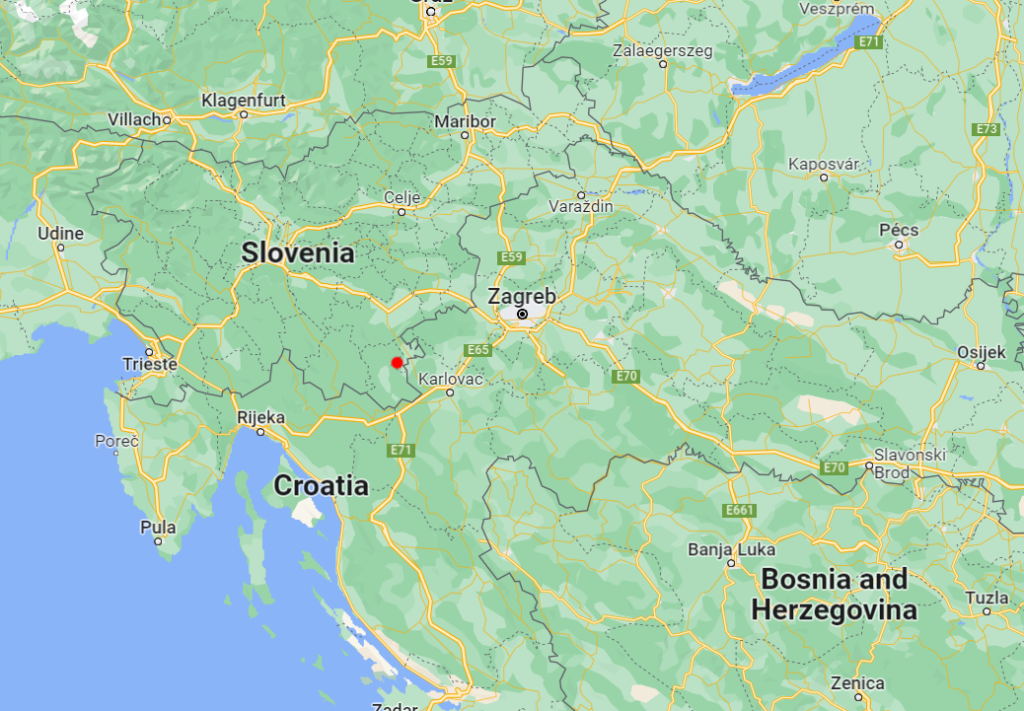
There was not much time, so we chose only the weekend variant. Our friend from tailed amphibian keepers group – Jan Doněk, joined us. On Friday after work, we met at Petr’s house in Ptice at 16:00 and headed south. Honza joined us on the way in Veselí nad Lužnicí and we continued on. Heavy rain soon came and the driving took a little longer than planned. We arrive at the camp by the river Kopla near the town of Metlika about two hours after midnight. We agreed with the owner that we would pay him the next morning and he had no problem with our night arrival.
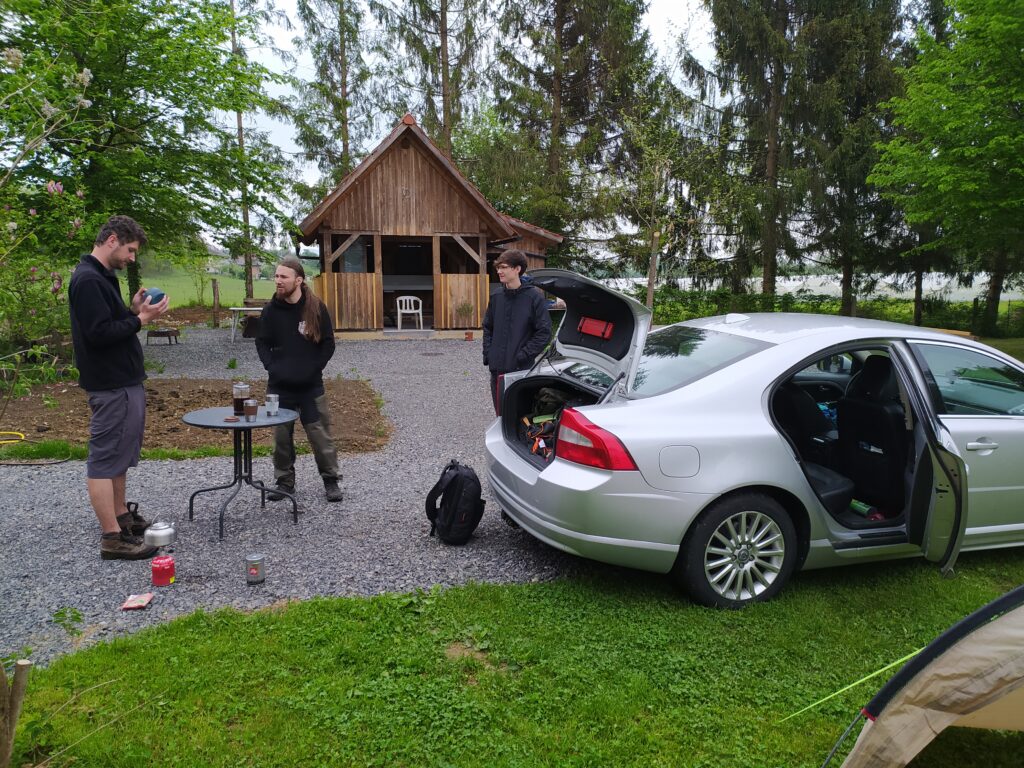

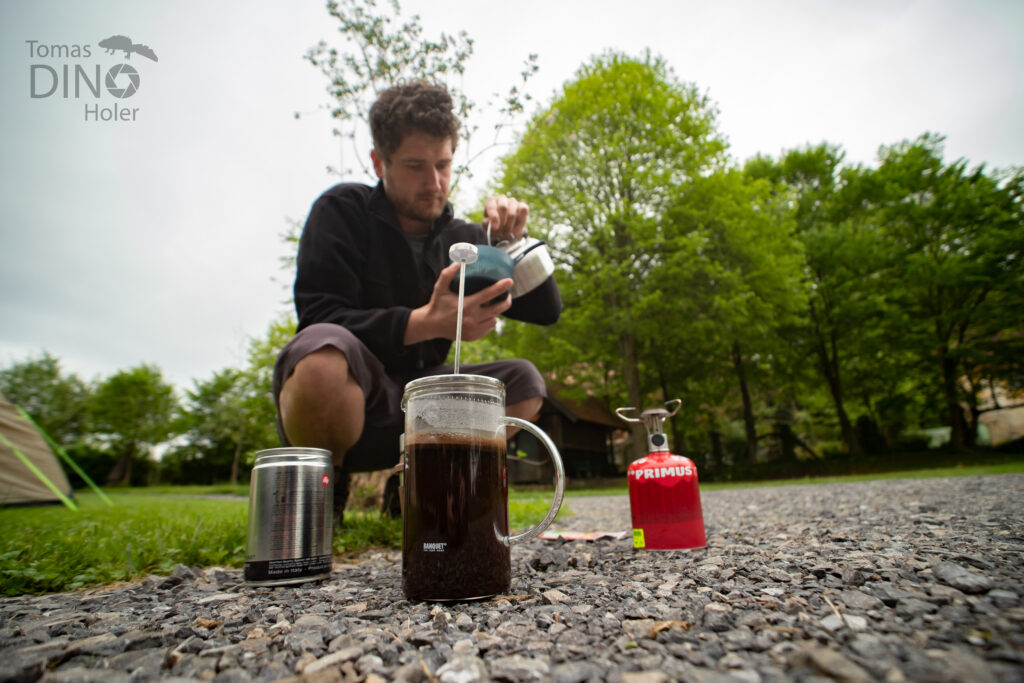
We enjoyed a few hours of sleep and in the morning, after a quick breakfast and coffee, we set out to explore the surroundings. The river Kolpa is quite fast flowing, but shallow. Although the weather was not very good, we managed to find several dice snakes (Natrix tessellata) here. However, our goal was elsewhere, so we just took a few photos and videos and we were already sitting in the car to explore the surrounding caves. The Slovenian landscape is a proof that agriculture can also be done sustainably. No wide yellow fields, only narrow strips of crops complemented by meadows.

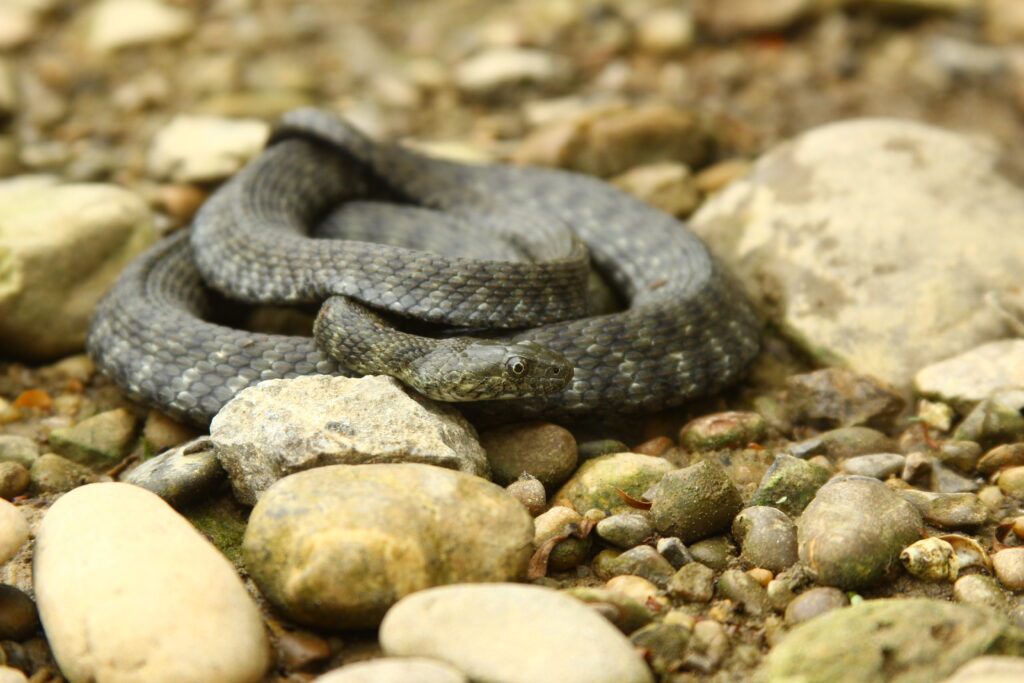
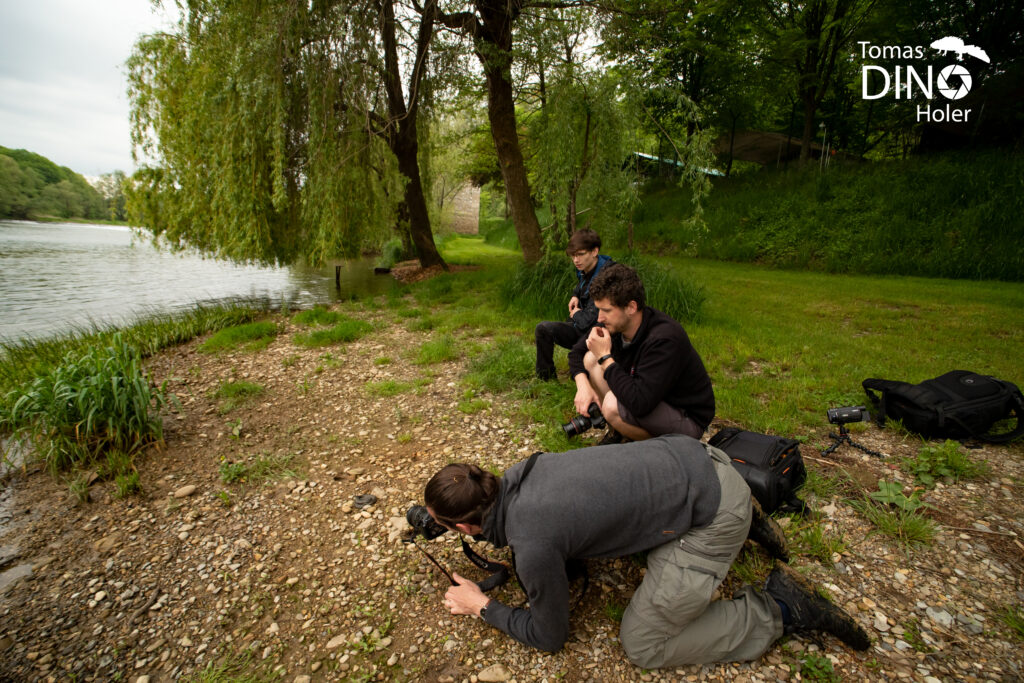
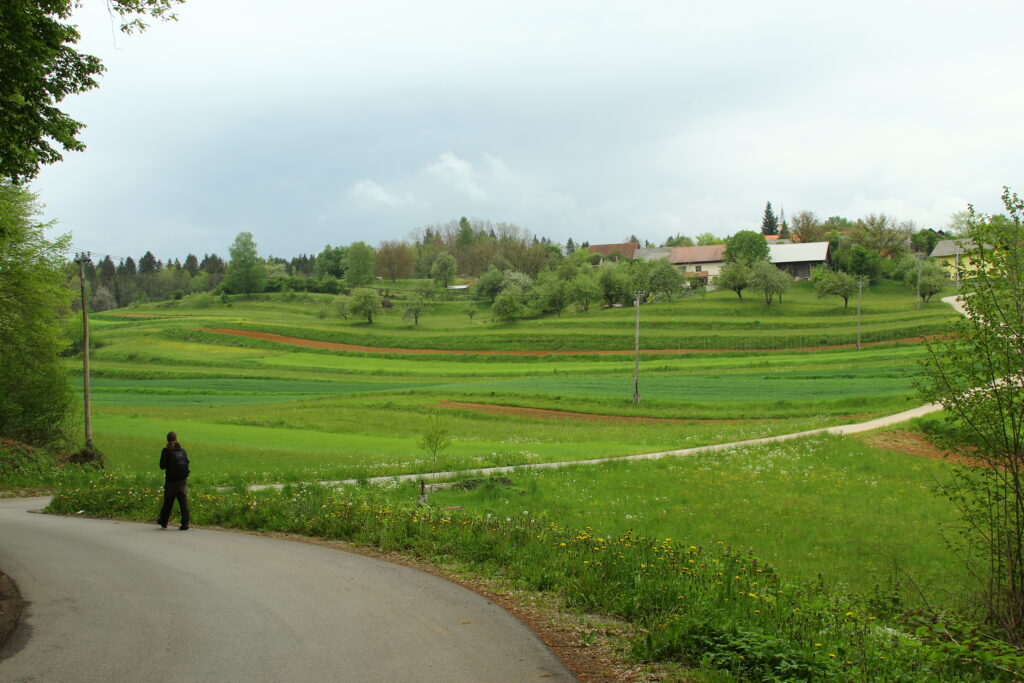
At the first cave we found only a locked shaft leading to an unknown place. But next to it there was a small concrete watering hole, that was teeming with life. The tadpoles of frogs (Rana sp.) and newts (Ichthyosaura alpestris) were almost invisible through the thick layer of zooplankton. The yellow-bellied toad (Bombina variegata) also hid in the vegetation near the surface.
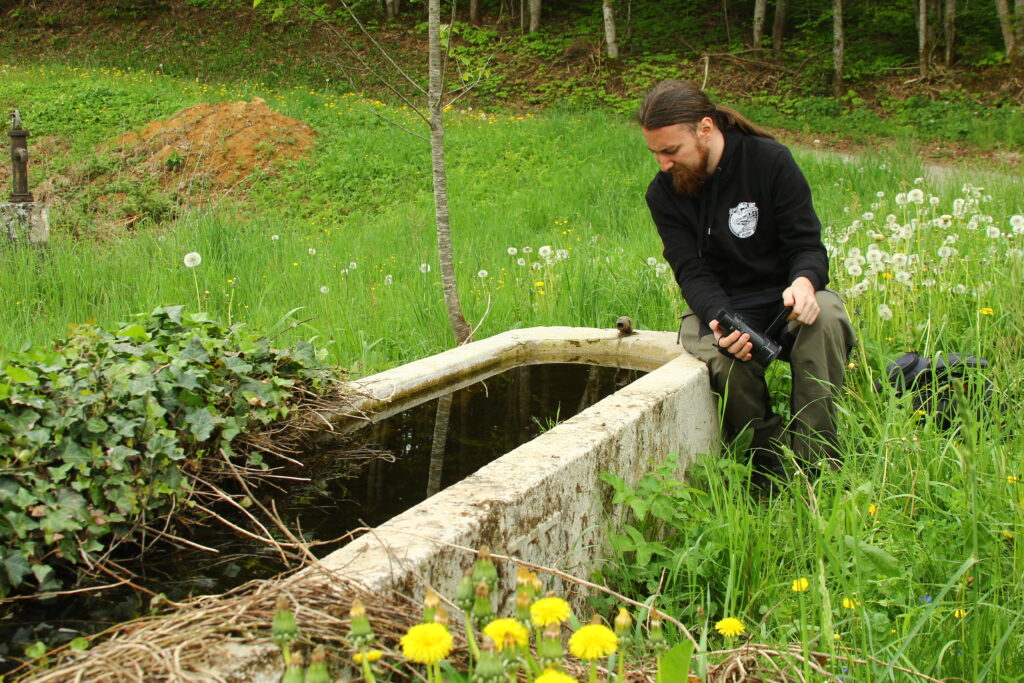
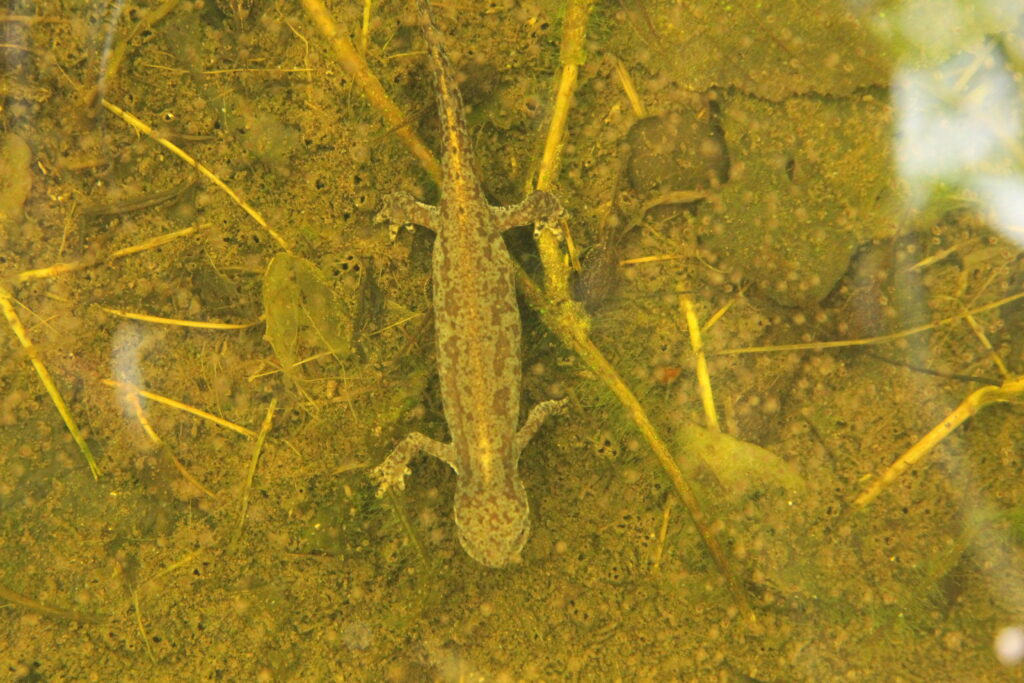

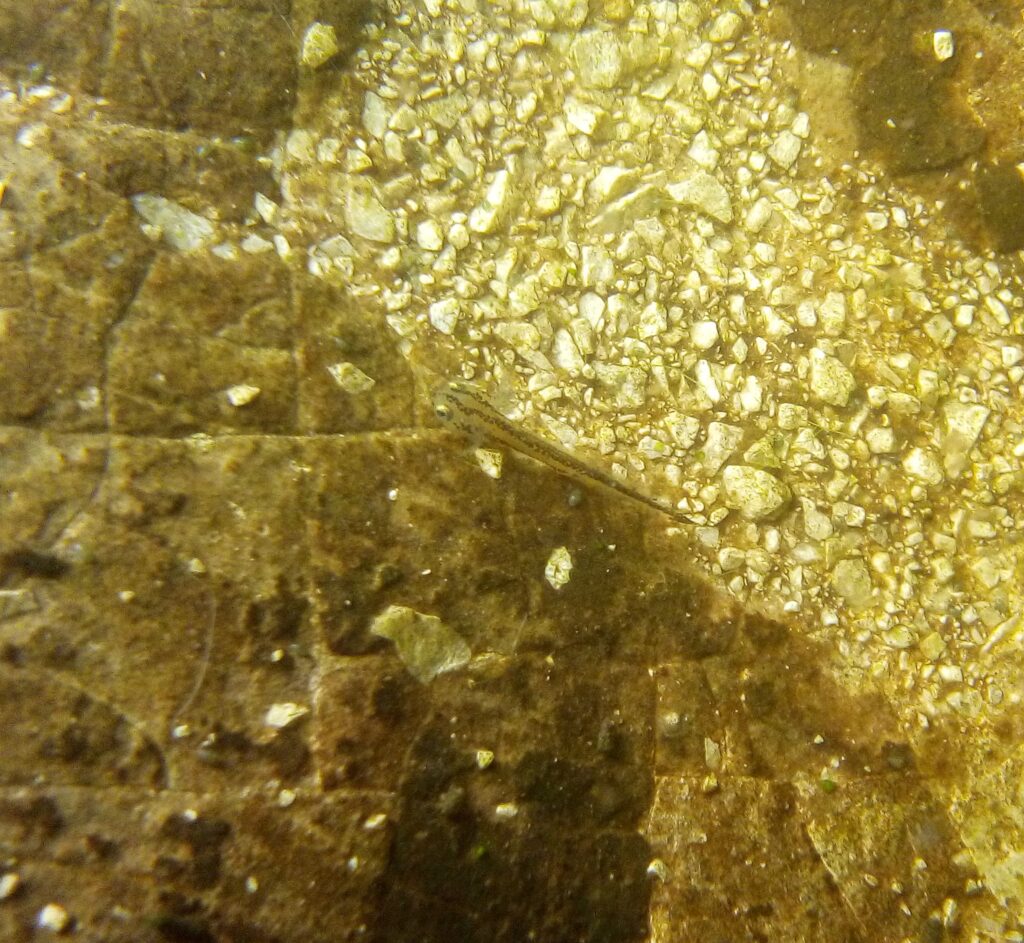
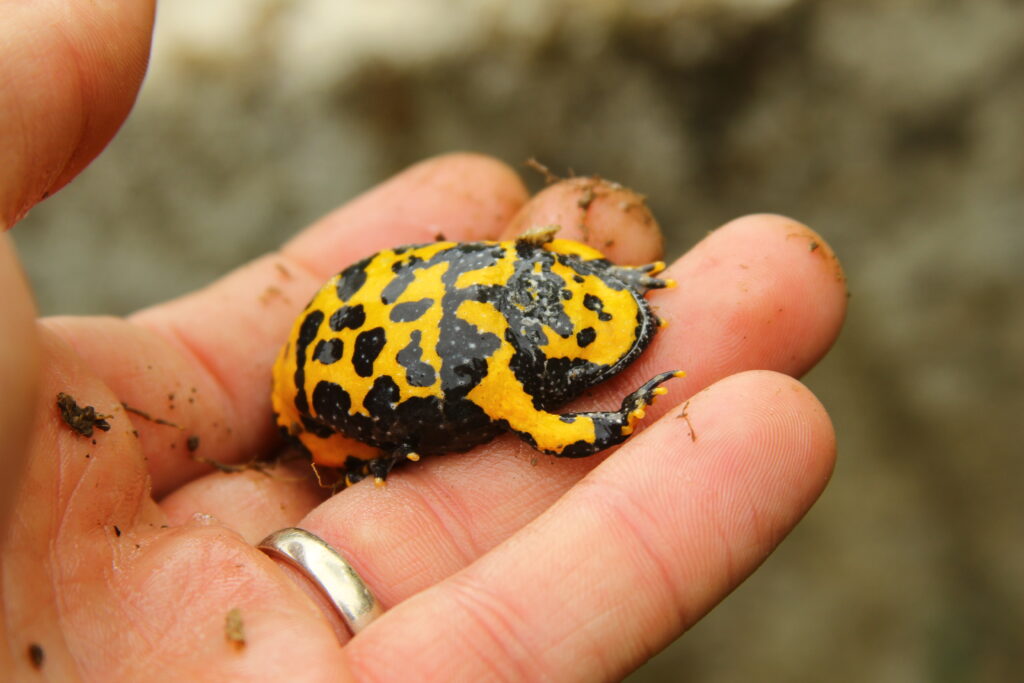
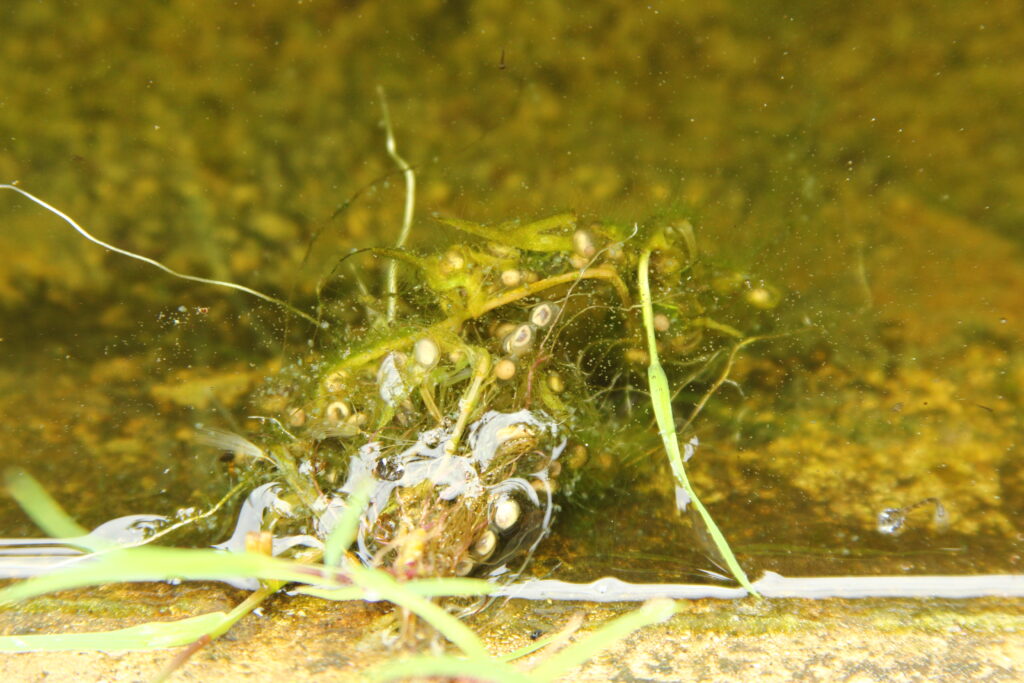
The second cave had a cleverly hidden entrance behind the woodshed of one of the cottages, but we managed to find it. The cave was not very spacious and there was no water in it, except for a small puddle in the corner. Although it continued through a very low entrance to the ground, somewhere unknown, but without the appropriate equipment, we did not risk such a journey. However, we found several wall lizards (Podarcis muralis) around the entrance and in the close vicinity. We could not find the entrance of the third cave; respectively, it was probably located just above the river surface in an almost perpendicular slope.
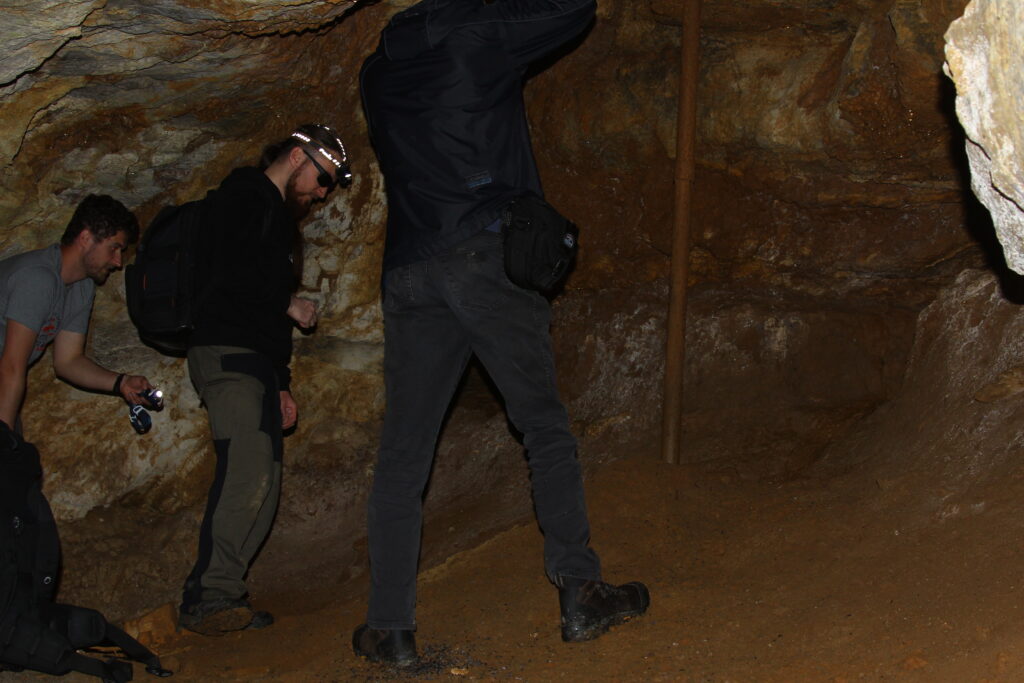
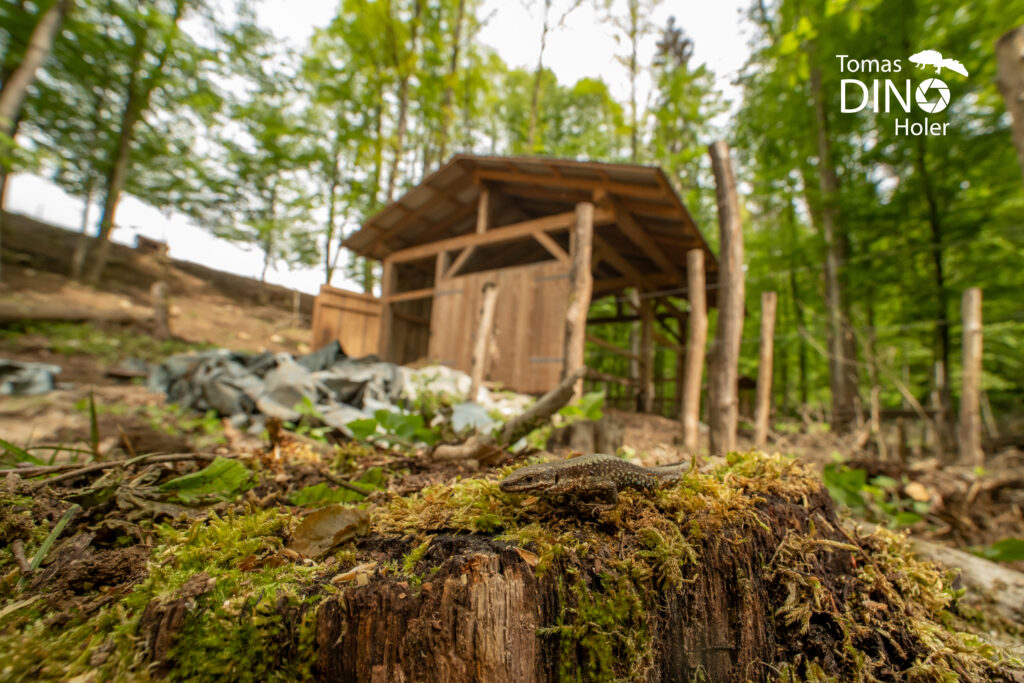
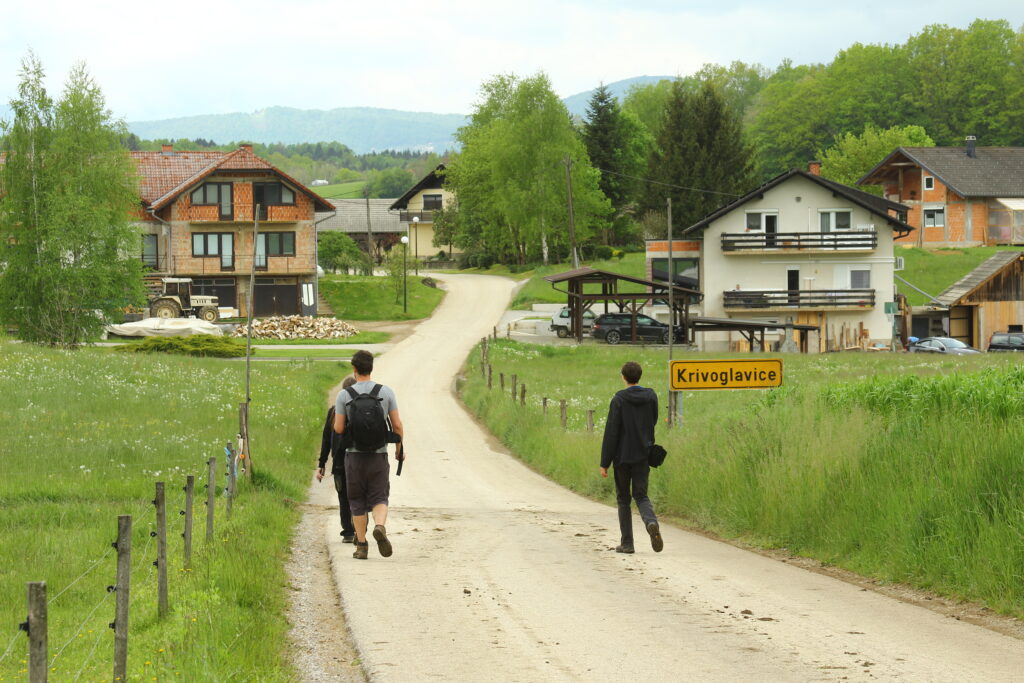
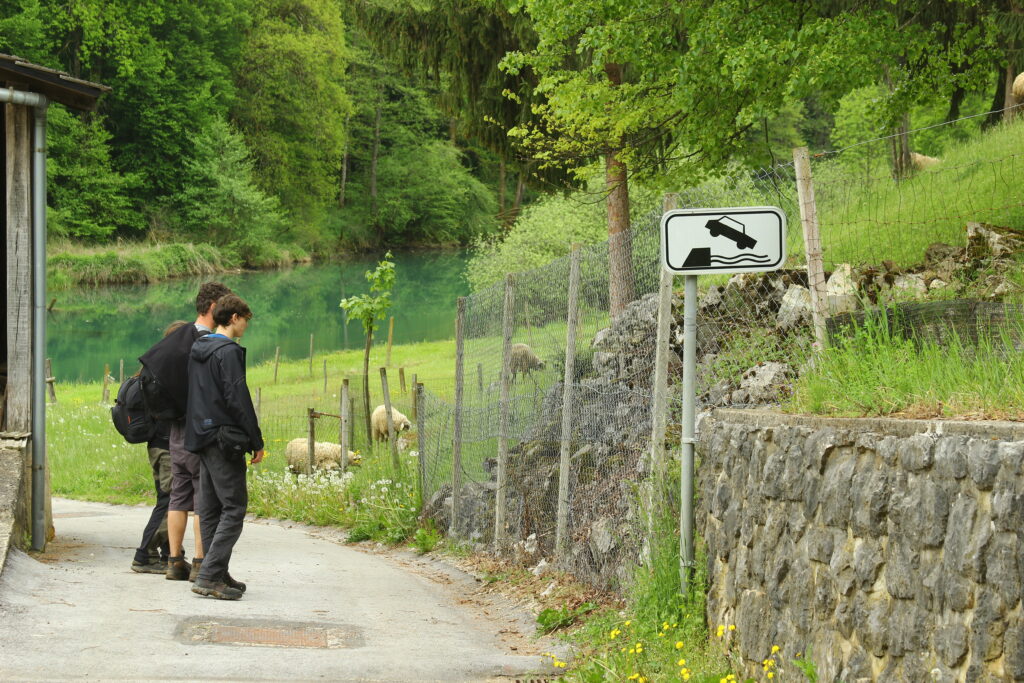
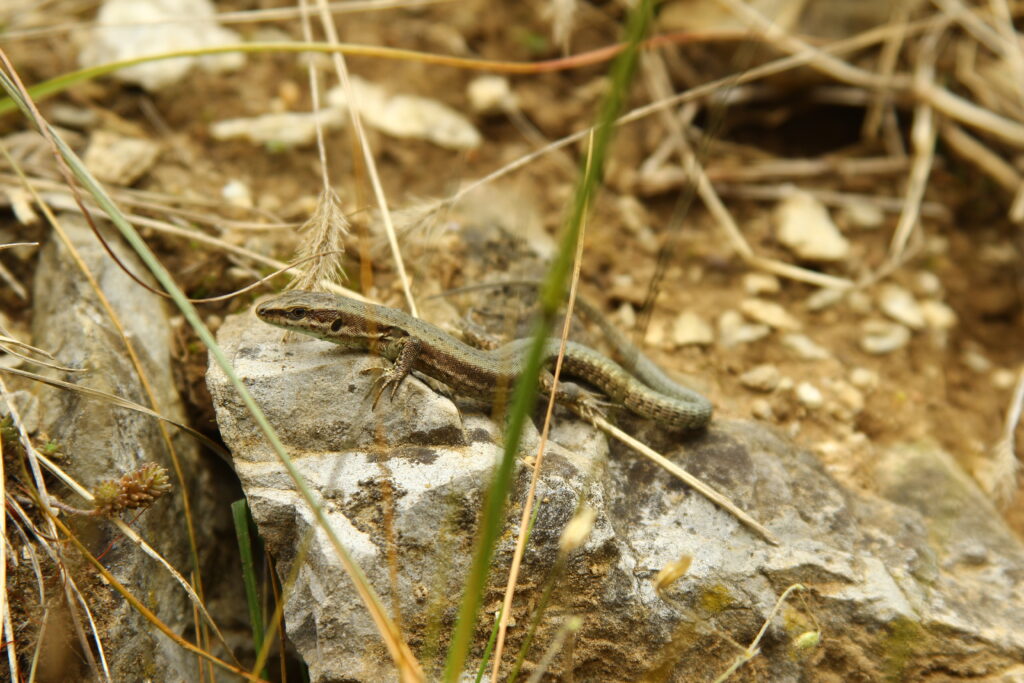
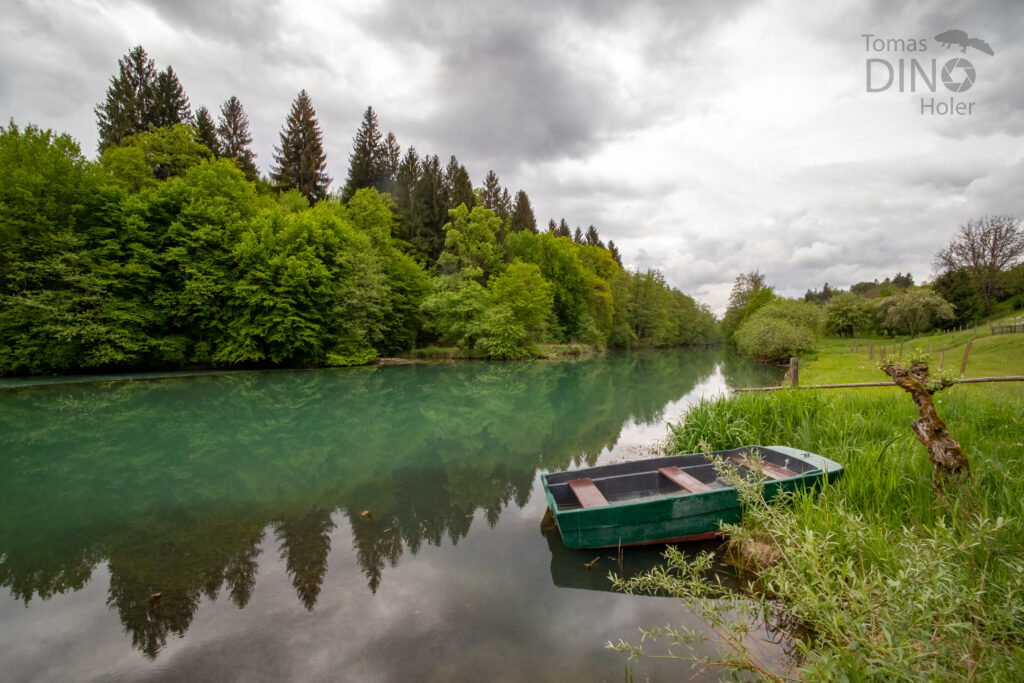
The fourth cave finally looked promising, as a small spring flowed out of it. I crawl through the narrow corridor as far as I could and saw a small lake at the end of it. That gave me hope. But no olm was there. I found only a young common frog (Rana temporaria).
It was already after noon, so we headed to the town of Črnomelj and the nearby information center in the place of occurrence of black olms of the subspecies Parkelj, where we had arranged a tour. The words “Ahoy, Czehy!” We were welcomed by the owner of the homestead and the administrator of the information center Rihard Zupančič. Despite the fact that he was hosting a family reunion here, he was willing to spent time telling us some informations about the local endemic subspecies of macarat. Črni močeril – as the Slovenes call it, is a subspecies of the olm living in an area of only 10 km2. However, they can only be observed in a pond covered by a tent in the area of the information center. From other localities, they are known by accidental finds on the surface of washed-out individuals or only from their eDNA found in water samples in the surrounding springs. Unlike the classic “white” olm, the subspecies parkelj has distinct eyes. Both white and black macarats are most threatened by groundwater and cave pollution, whether from industrial and agricultural chemicals or households. Several populations have been shown to be extinct as a result of pollution, to which the olms, living in a chemically and physically stable environment, are extremely sensitive.
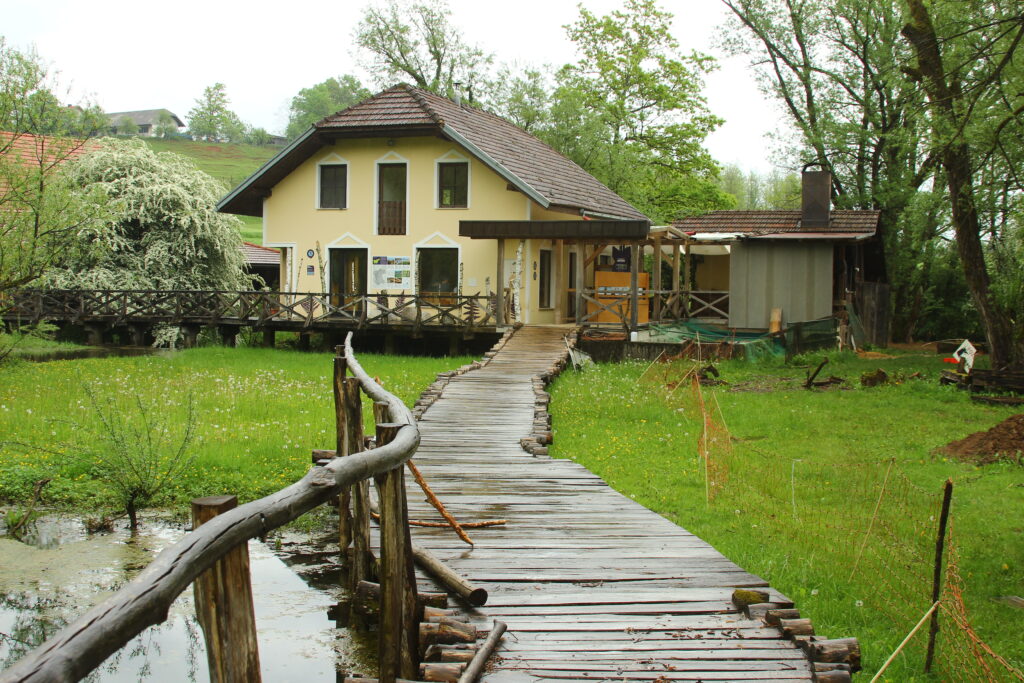

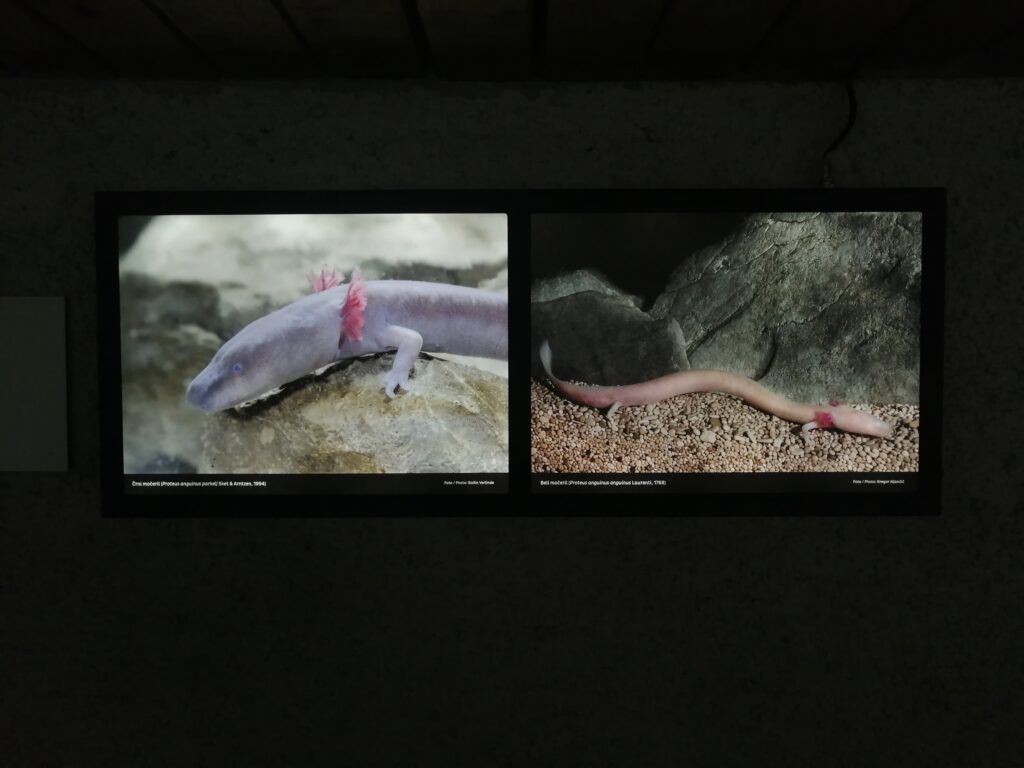
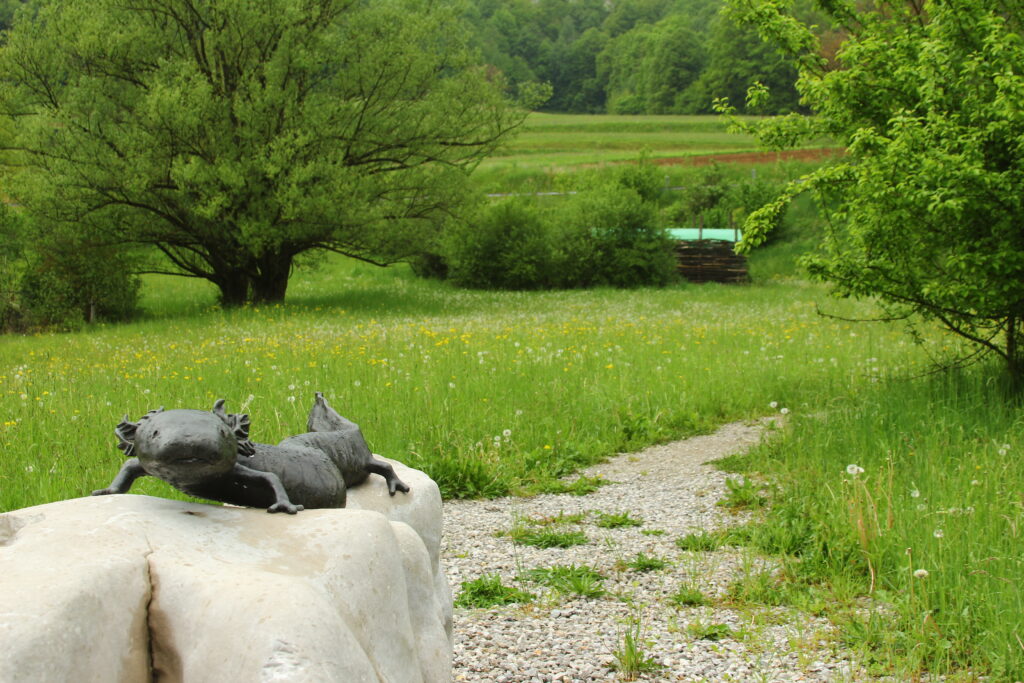
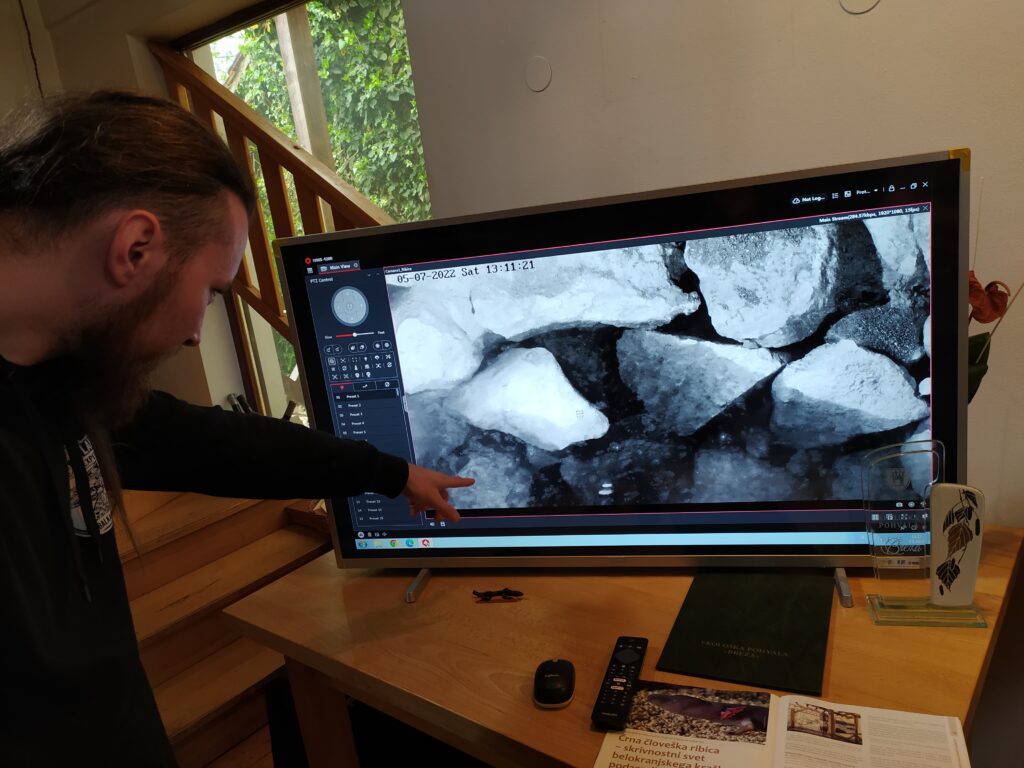
After the explanation, Rihard went to the kitchen and had us inspect the artificial cave with information about the macarats and showed us a screen showing a live broadcast of a camera located in a tent cave with black olms. The camera could be controlled with a joystick, so we explored, rolling our eyes at the screen and looking for some movement. And in that corner, the silhouette of a dark elongated body really moved! So we were sure that they are on the surface today and it is therefore possible to observe them! We waited patiently for Rihard to serve the guests. And then finally came our moment. Normally, he says he doesn’t take almost anyone to the tent, but he agreed to show them to us! He took us out around a shallow pond along a path leading to a tent with a locked door. The tent has a primarily scientific purpose, university researchers could observe olms in situ. If the lake below it was uncovered, the Macarats would not be there during the day, but they would be hidden in a cave below it, which is said to lead about 100m deep. There is a wooden walkway with railings around the covered pond. Our feelings cannot be described in words when the body of a cave salamander twisted for the first time in the flashlight. We were surprised by their size – about 30 cm. The largest they saw, said Rihard, were definitely over 40 cm long! So it is definitely the largest European amphibian and the ribbed newt falls to the second place.
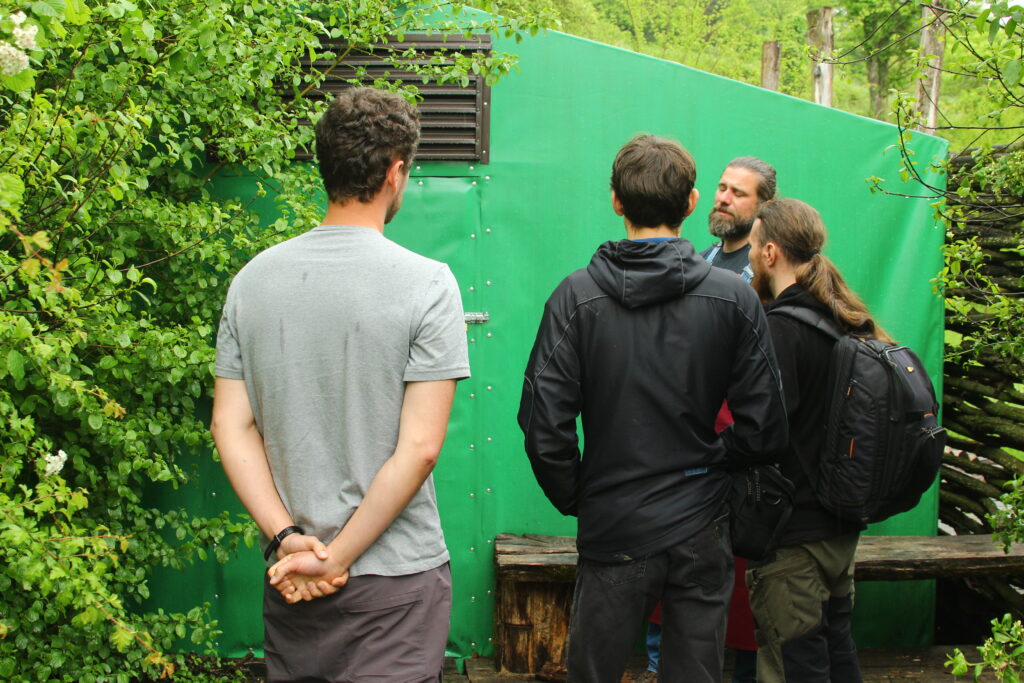
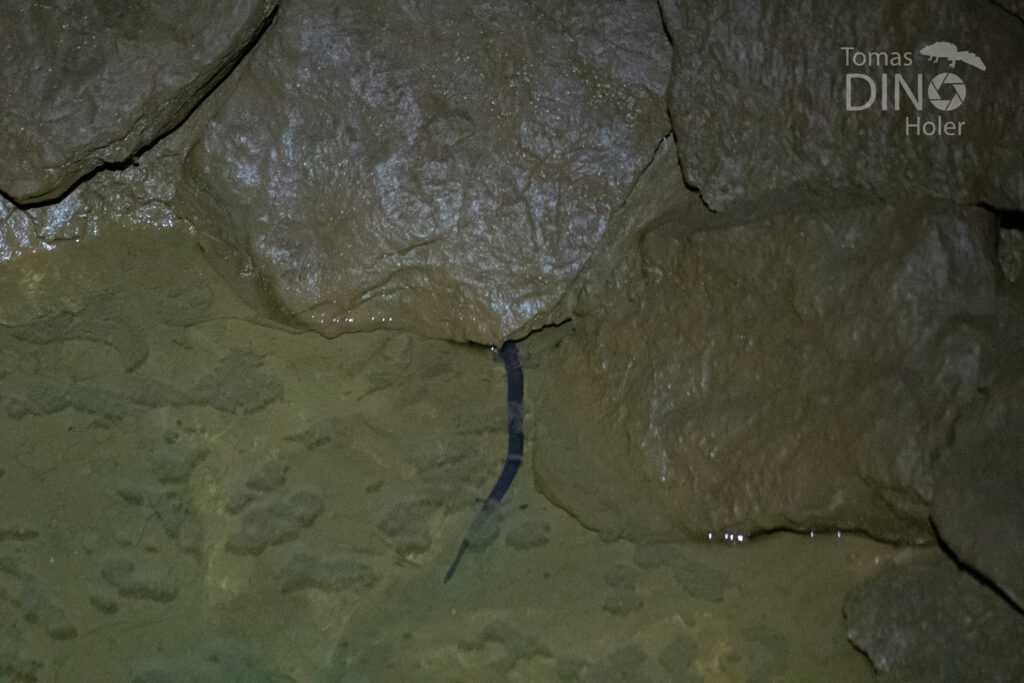
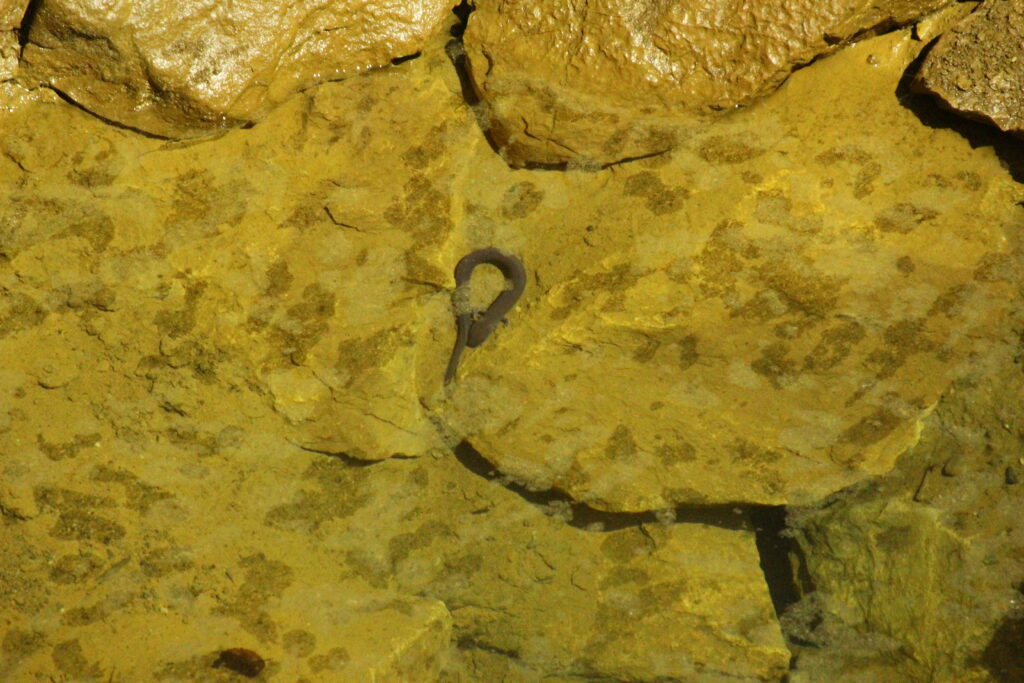
The black olm (Proteus anguinus parkelj). Photo: Petr Hataš
Filled with the bliss of an indescribable experience, we received a local wine with mineral water from Rihard, exchanged a few more words, listened to a local musician; his song still sounds in our heads; and then we went looking for a restaurant, because it was a long time before lunch. In a nearby town, we ordered a mix of grilled meat at a local restaurant. Some of the orders were delivered by a robot. However, it was the first day at work and we were not served without some shards of glass. The black olms partially satisfied us. They were wild creatures, but still observed under artificial conditions, under the tarpaulin. Driven by desire, we set out into the wilderness again.
The other two caves, 5th and 6th respectively, were located by a beautiful river with seemingly an unnaturally blue color of water. This coloration is caused by rock microparticles that float in the water column and filter out the light by reflecting back more blue and green parts of the spectrum. The trees leaning over the river flowing through the deep valley were densely covered with epiphytic mosses and ferns, due to the high humidity. The first cave was more of a tourist nature. According to educational signs, prehistoric people stayed in it many years ago. The second cave was located directly on the river bank and was accessible only from the water. Our hopes were slowly fading along with the setting sun. But we still had in reserve the originally planned cave in Croatia.
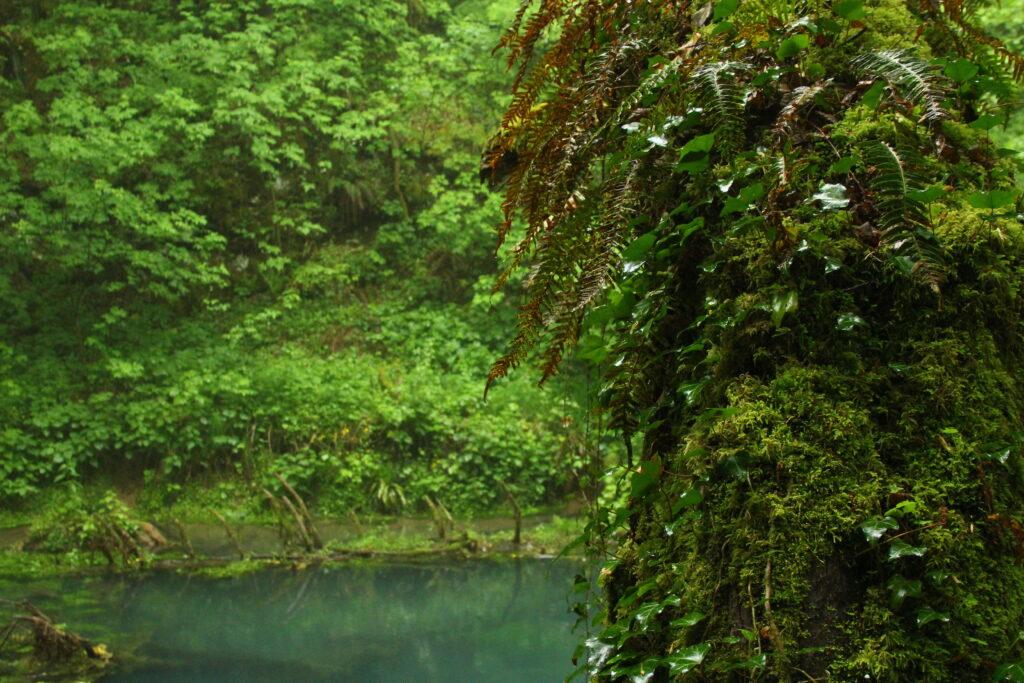
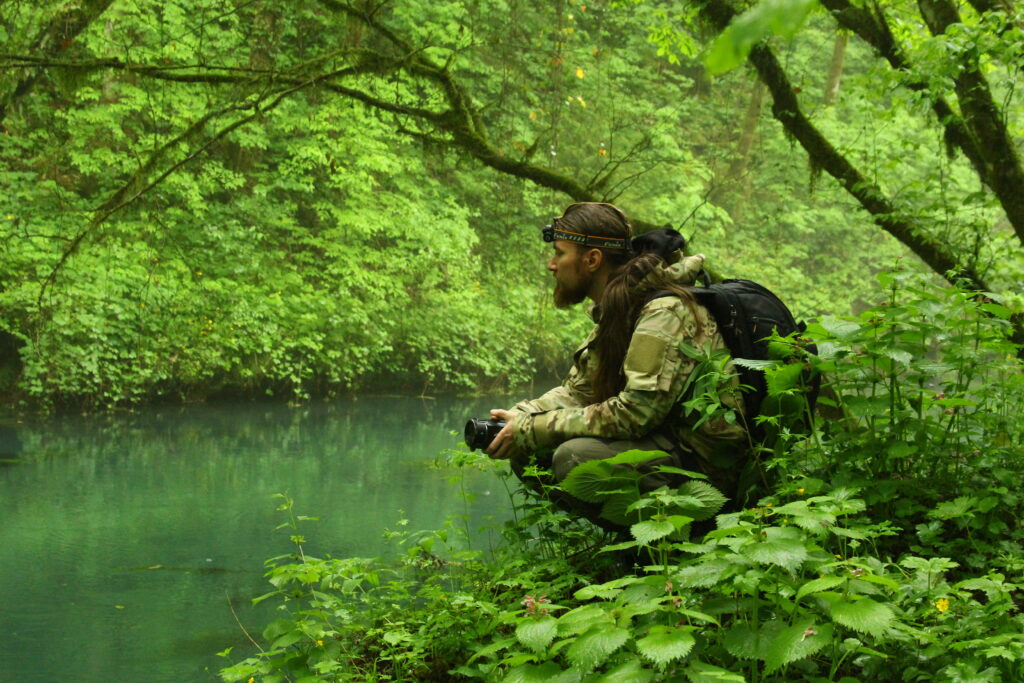
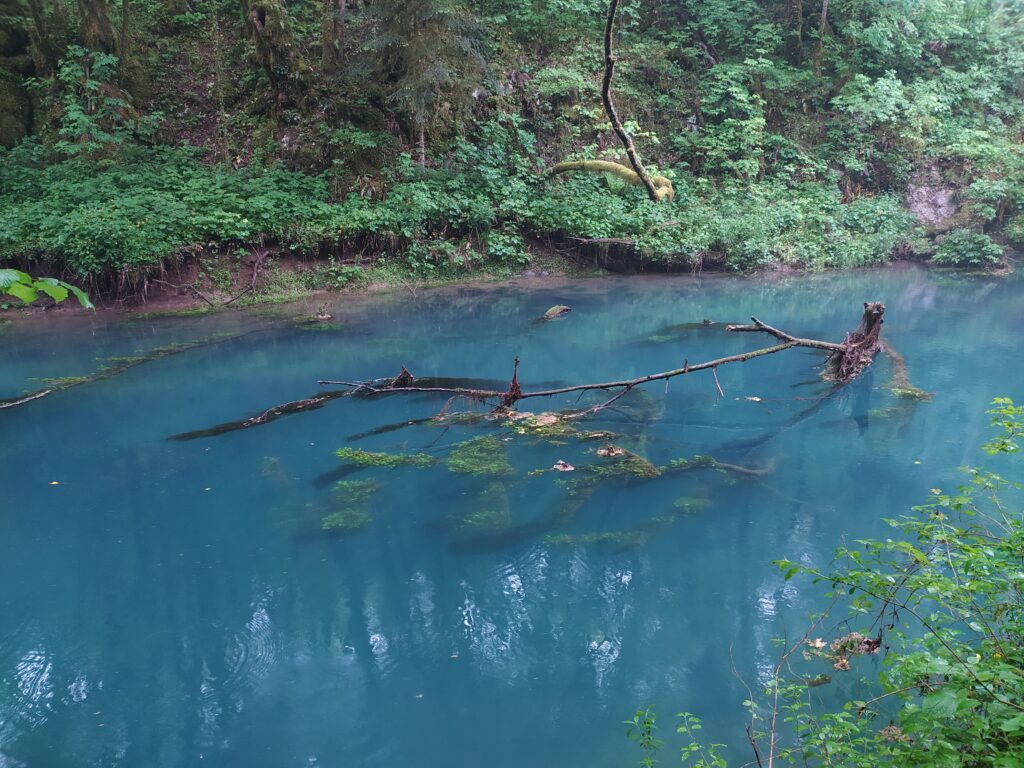
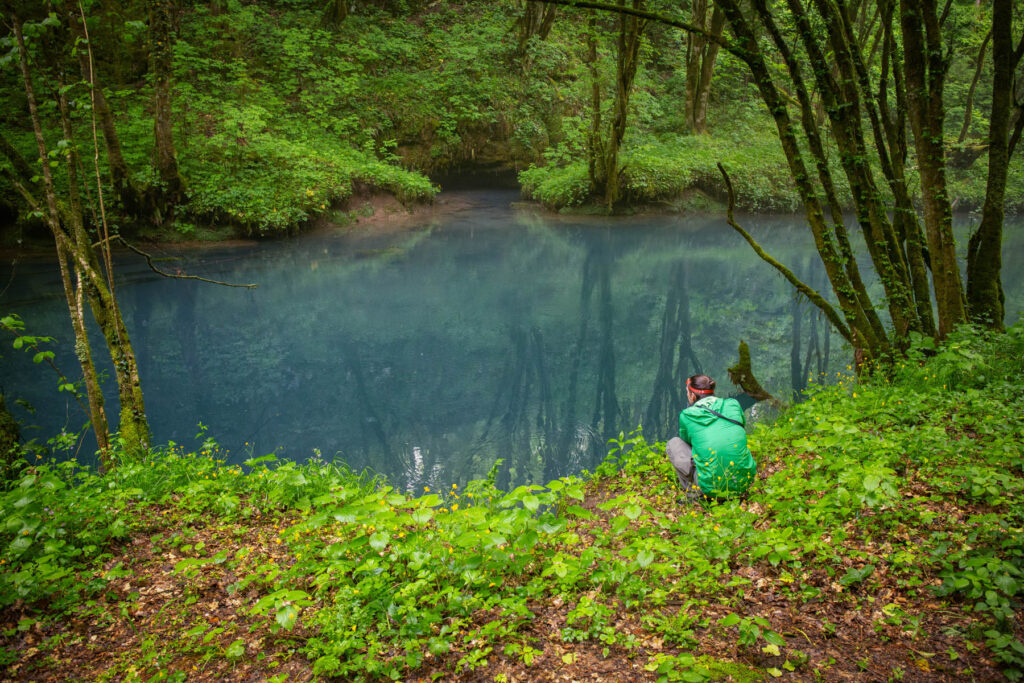
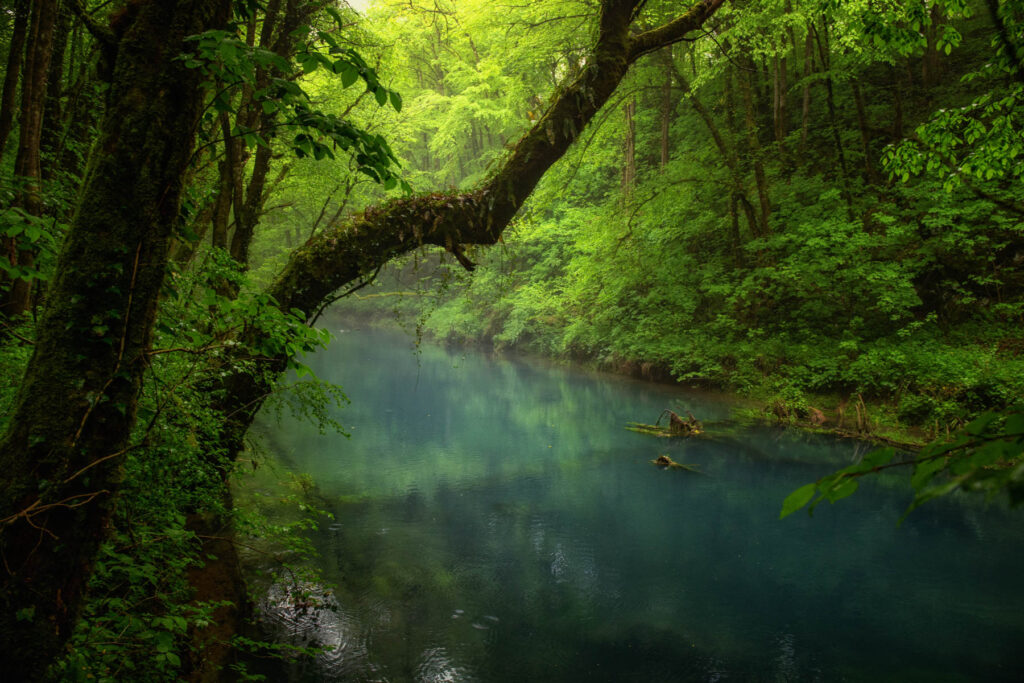

But then we discovered two more caves on the map with an interesting name, which I will not publish here. This time there was no path to them and we had to get through the dense forest. As we approached the first pit, a spark ignited in us again. The water surface was visible at the bottom of a hole of about five meters deep. But it would not be possible to get there without a rope. We walked around for a while until we found a side entrance where the descent was already a little safer-looking. So we carefully descended the damp, mossy walls of the ravine. A beautiful spectacle awaited us below. A spacious lake in a cave, where daylight shone through the chimney on the other side. With the flashlights on, we approached cautiously. Suddenly I saw something milky white in the leaves at the bottom. I thought for a while that it was probably just another leaf, but then it moved! At that moment, Honza saw anotherone and over the next few seconds we counted at least 5 individuals of the olms! It was just a pure satisfaction and a dream that came true! I managed to get into the narrow side corridor, where I found another large individual. The corridor continued around the corner, and there was an incredibly deep well. From there, the olms apparently emerge to the surface, where there was a larger amount of food. The cave shrimp flickering in the flashlight were certainly on their diet, as were the earthworms falling there from the surface.
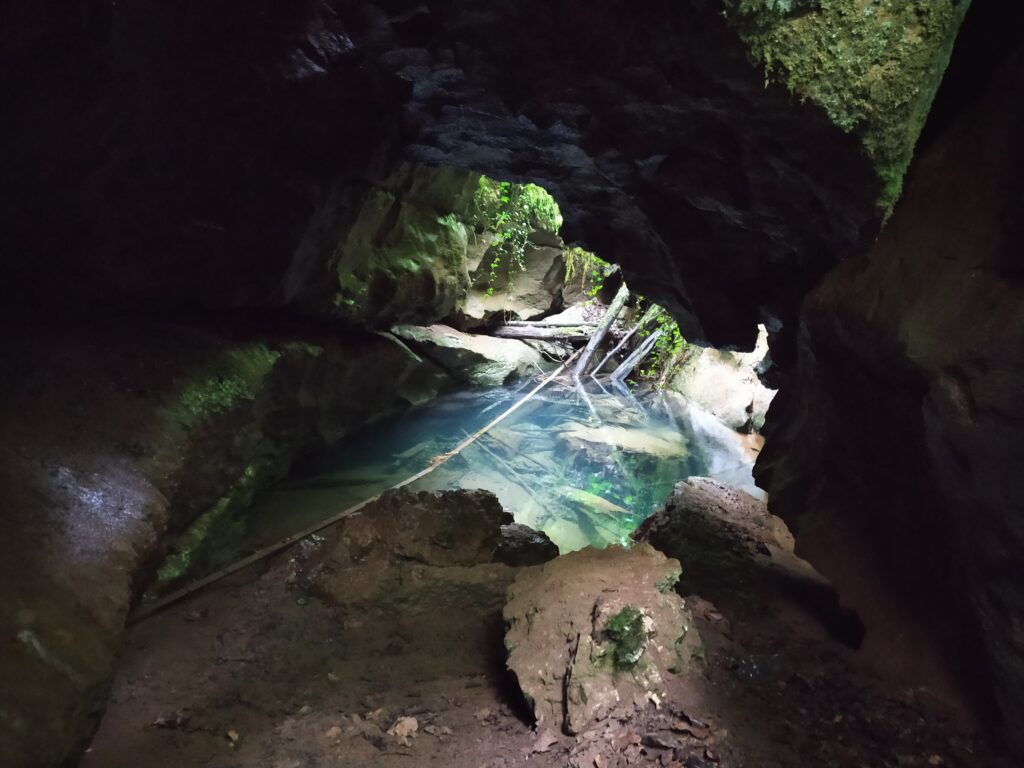
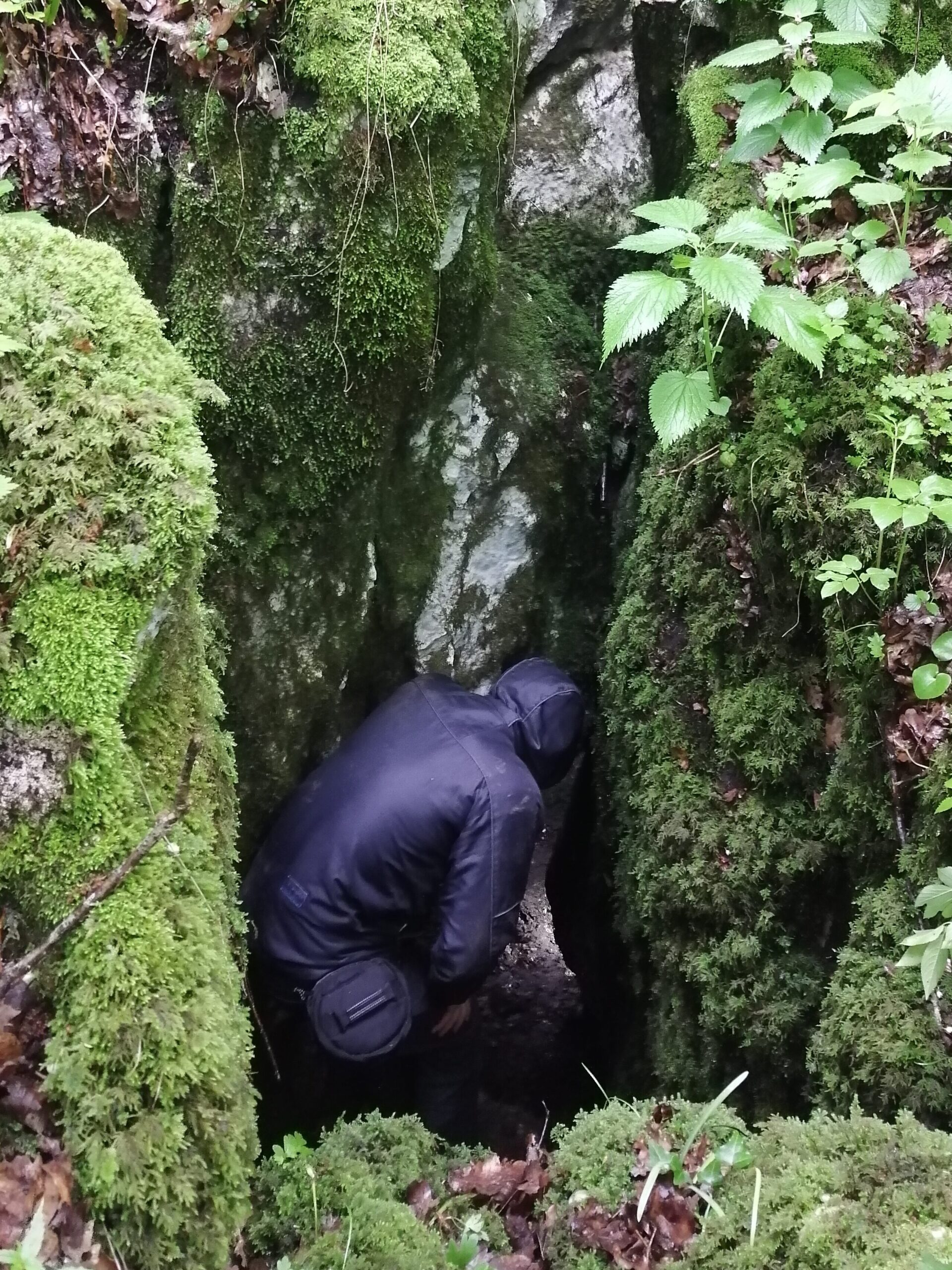
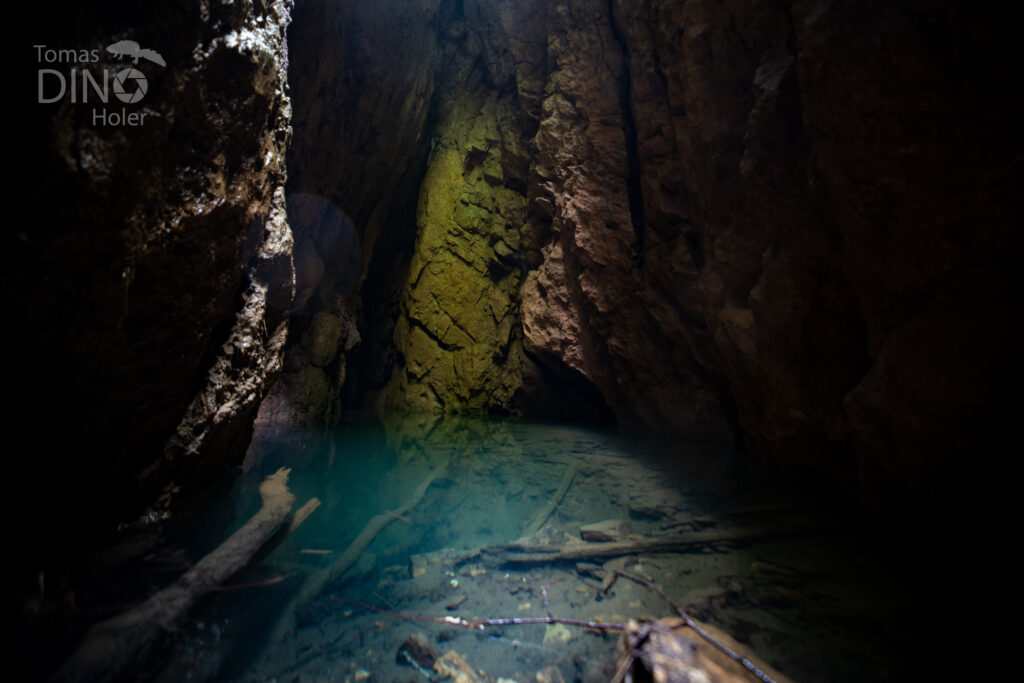
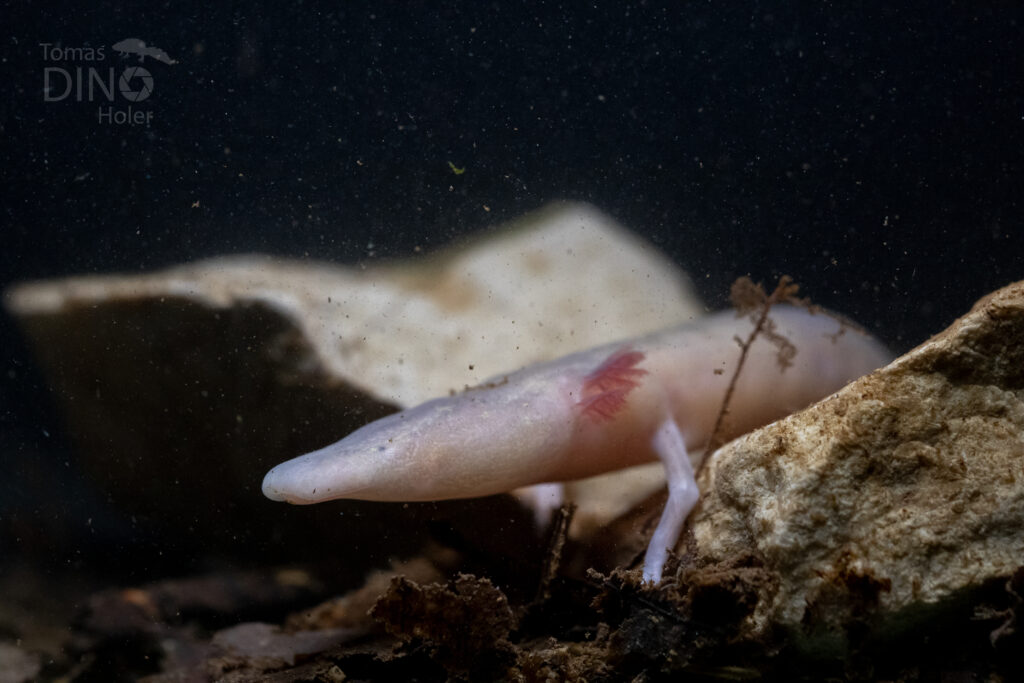


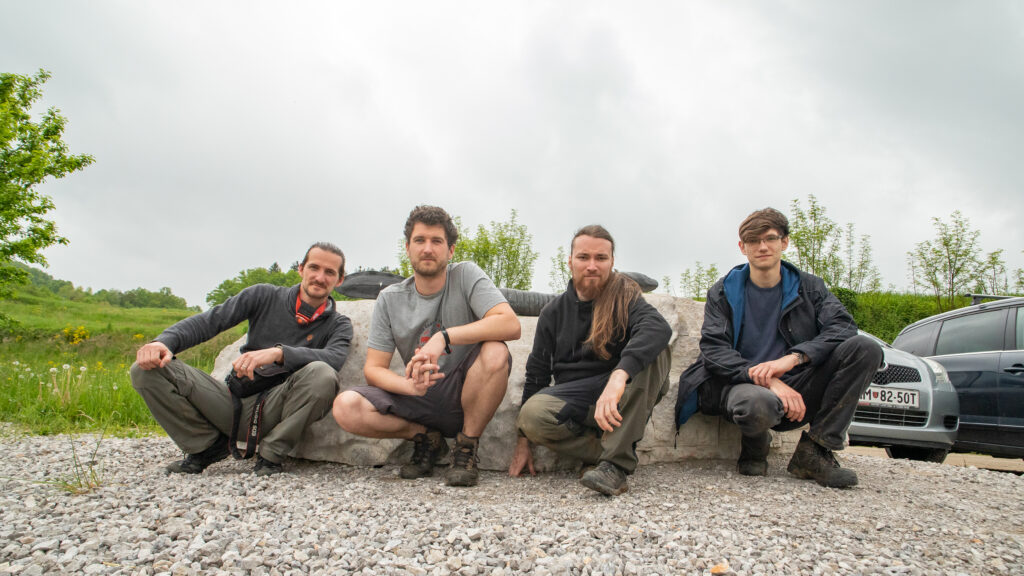
Our dream and the goal of the expedition were fulfilled and so we set out with a satisfaction feeling on the way home. We will never forget this incredible experience and we will definitely come back into our cave some other day!
On behalf of Herpetology.cz team,
Dino
List of taxa (8):
Amphibians (Amphibia) – 6 taxa:
Frogs (Anura) – 3 species:
Pelophylax sp.
Rana temporatia
Bombina variegata
Tailed ampibians (Caudata) – 3 taxa:
Ichthyosaura alpestris
Proteus anguinus anguinus
Proteus anguinus parkelj
Reptiles (Reptilia) – 2 taxa:
Lacertidae
Podarcis muralis maculiventris
Colubridae
Natrix tessellata
